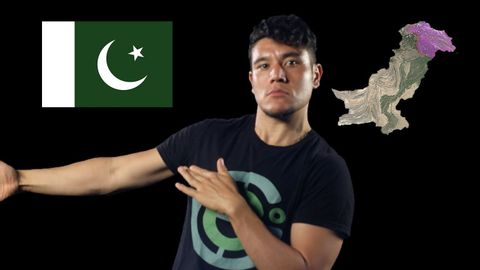現在的地理!巴基斯坦 (Geography Now! PAKISTAN)
 沒有此條件下的單字
沒有此條件下的單字US /ˈɛpɪˌsod/
・
UK /'epɪsəʊd/
- n.插曲;集;(電視或廣播節目的)一集;事件;一段時期;(疾病的)發作
US /ɛnˈtaɪr/
・
UK /ɪn'taɪə(r)/
- adj.全體的 ; 完全的;未分割的;全緣的 (植物學)
US /ɪnˈkrɛdəblɪ/
・
UK /ɪnˈkredəbli/
- adv.令人難以置信的是;難以置信地;非常地;令人難以置信地
- n. (c./u.)通道;接近或使用的機會;訪問
- v.t.訪問
- v.t./i.存取(資料);訪問

